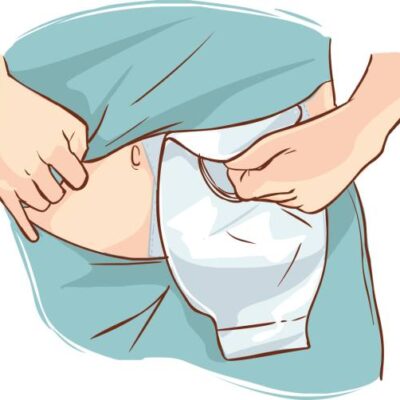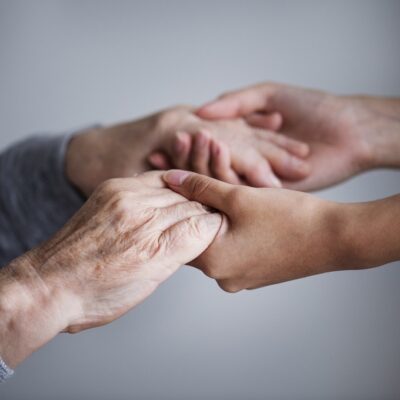Gain a comprehensive understanding of Hospital-Acquired Pressure Injuries (HAPI) and their impact on patients. Learn about prevention, treatment, and patient care in this informative article.
Introduction
In the world of healthcare, it is crucial to have a comprehensive understanding of Hospital-Acquired Pressure Injuries (HAPI) and their impact on patients. HAPI, also known as pressure ulcers or bedsores, are localized injuries to the skin and underlying tissue, primarily caused by prolonged pressure on the skin. These injuries can significantly affect patients’ well-being, leading to pain, discomfort, and even serious complications if not properly managed. In this article, we will delve into the depths of understanding HAPI and how they affect the patient.
What are HAPI?
Hospital-Acquired Pressure Injuries (HAPI) are wounds that develop when prolonged pressure is applied to certain areas of the body. They are most commonly seen in individuals who are immobile or have limited mobility, such as bedridden patients, wheelchair users, or those with medical conditions that restrict movement. The continuous pressure restricts blood flow to the affected area, leading to tissue damage and the formation of pressure ulcers.
HAPI typically occur over bony prominences, such as the heels, sacrum, hips, and elbows. The severity of the injury can vary, ranging from mild redness and skin irritation to deep wounds that extend into the underlying muscles and bones. Understanding the stages of HAPI is crucial for effective prevention and treatment.
Stages of HAPI
- Stage 1: In this stage, the skin appears intact but may exhibit non-blanchable redness, indicating potential damage to underlying tissues.
- Stage 2: The skin now shows a partial-thickness loss, presenting as a shallow open ulcer or blister. The surrounding area may be red and swollen.
- Stage 3: At this stage, the pressure injury extends into the full thickness of the skin and subcutaneous tissue, forming a deep crater-like wound. It may appear as a shallow or deep open ulcer.
- Stage 4: The pressure injury extends even deeper, involving muscle, tendon, or bone. The wound may be covered by slough or eschar, and it often requires surgical intervention.
How Do HAPI Affect the Patient?
Understanding the impact of HAPI on patients is crucial for healthcare providers to implement appropriate prevention strategies and provide optimal care. Here are some key ways in which HAPI affect patients:
- Pain and Discomfort: HAPI can cause significant pain and discomfort for patients. The continuous pressure on the skin leads to nerve damage, resulting in aching, burning, or sharp pain sensations. This discomfort can greatly impact a patient’s quality of life and overall well-being.
- Infection Risk: Open wounds associated with HAPI create an entry point for bacteria and other pathogens, increasing the risk of infection. Infections can further complicate the healing process and may require additional medical interventions, such as antibiotics or wound debridement.
- Delayed Healing: Healing HAPI can be a complex process, particularly in advanced stages. The presence of underlying tissue damage, compromised blood flow, and possible infection can delay the healing process, prolonging the patient’s recovery time.
- Increased Length of Hospital Stay: Patients with HAPI often require extended hospital stays for specialized wound care and treatment. This not only adds to healthcare costs but also puts patients at risk of developing other healthcare-associated complications.
- Emotional Impact: HAPI can have psychological and emotional effects on patients. The presence of chronic wounds, pain, and restricted mobility can lead to feelings of frustration, helplessness, and depression. It is important for healthcare providers to address these emotional needs along with the physical aspects of care.
FAQs about HAPI
1. What are the main risk factors for developing HAPI?
- Prolonged immobility or limited mobility
- Poor nutrition and hydration
- Advanced age
- Chronic diseases affecting circulation and tissue health
- Incontinence or excessive moisture on the skin
2. How can HAPI be prevented?
- Regular repositioning of immobile patients
- Proper nutrition and hydration
- Use of pressure-reducing surfaces, such as specialized mattresses or cushions
- Skin care, including regular cleansing and moisturizing
- Education and training for healthcare providers on HAPI prevention protocols
3. Are there any complications associated with HAPI?
- Infection
- Cellulitis (skin infection)
- Osteomyelitis (bone infection)
- Sepsis (life-threatening infection)
- Deep tissue damage
- Delayed wound healing
4. How are HAPI treated?
- Relieving pressure on the affected area
- Wound cleansing and dressing
- Debridement (removal of dead tissue)
- Antibiotic treatment for infections
- Surgical interventions for severe cases
5. Can HAPI be fatal?
In severe cases, where HAPI leads to complications such as sepsis or deep tissue damage, it can be life-threatening. However, with appropriate prevention measures and timely treatment, the majority of HAPI cases can be managed effectively.
6. What is the role of caregivers in HAPI prevention?
Caregivers play a crucial role in HAPI prevention. They should be educated about the risk factors, prevention strategies, and proper care techniques. Regularly assessing the patient’s skin, ensuring proper nutrition, and promoting mobility are important responsibilities of caregivers.
Conclusion
Understanding HAPI and their impact on patients is essential for healthcare providers, caregivers, and individuals themselves. By implementing effective prevention strategies, providing timely treatment, and addressing the emotional needs of patients, we can work towards minimizing the occurrence and severity of HAPI. With a comprehensive understanding of HAPI, we can improve patient outcomes and enhance their overall quality of life.






No Comment! Be the first one.